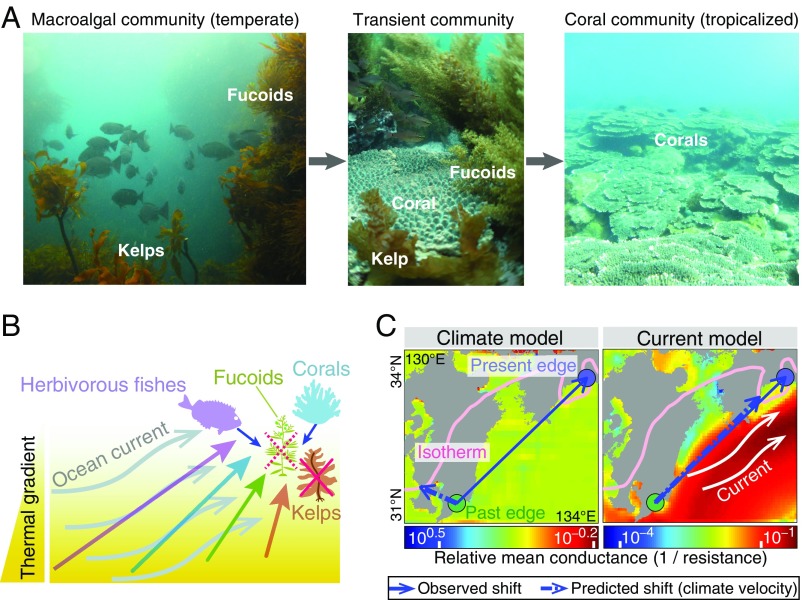Fig. 1.
Underwater photographs, hypothesized effects, and prediction models for range shifts. (A) Kelps and fucoids are dominant in Japanese coastal communities, but are gradually being replaced by expanding tropical corals with which they compete. (B) We expect that temperate macroalgal community will be more susceptible to deforestation by herbivorous fishes and be replaced by tropical corals (line colors indicate taxa) under strong ocean current flowing poleward (warm currents), because differences among taxa in adult mobility and larval/spore duration (from hours for kelps to a month for fishes) will influence shift rates that will be amplified under increasing strength of current transport. (C) Predictions of species range shifts are based on finding the least-cost path connecting past and present coastal locations of the isotherms corresponding to the temperature found at the initial location for each shift. These trajectories are based on conductance matrices constructed via weight optimization of the magnitude and direction of spatial thermal gradients (climate effect on dispersal) and ocean currents (current effect on dispersal) (see Materials and Methods for details). (Photos courtesy of N.H.K.)

